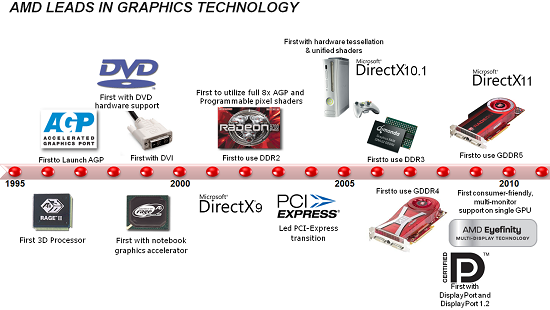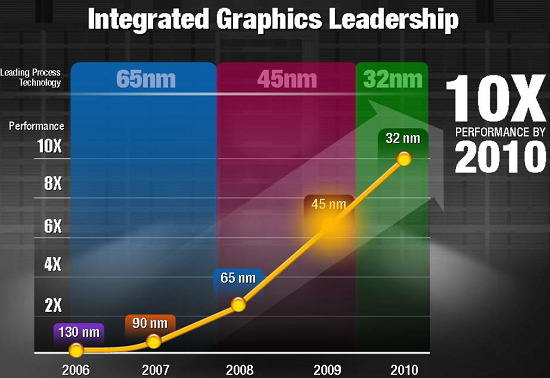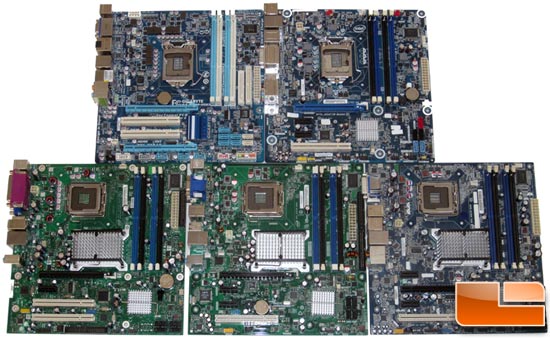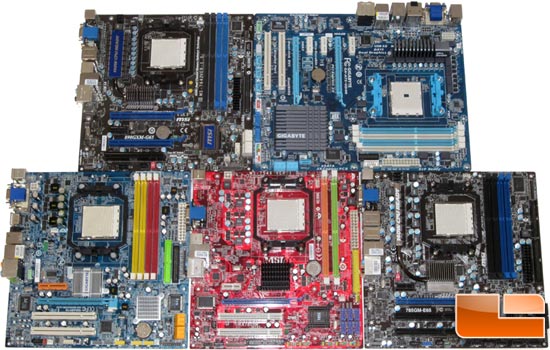How Far Have AMD & Intel Integrated Graphics Come Since 2006?
Integrated Graphics Showdown!
Since Legit Reviews first came online nearly a decade ago the one phrase that we have heard consistently over the years is that integrated graphics suck and that you should never use them. Mainly the people saying this are gamers and we all know that having a discrete graphics card is the way to go. To set things straight, Intel and AMD have never positioned their integrated graphics solutions for high-end gaming, but could that be changing?
Over the past couple years we have seen AMD and Intel improve integrated graphics enough that the sub $99 graphics card market has started to dry up. The performance level isn’t there to kill off mainstream discrete graphics cards, but entry level discrete cards are going to have a tough time finding a place in the market.


For years both AMD and Intel have claimed to lead integrated graphics performance, but not too many enthusiast and gaming sites actually look at integrated graphics let alone look at the performance gains over many years of products. That gave us the idea to do just that and it would also give us some numbers to use again when AMD launches Trinity and Intel launches Ivy Bridge processors later in 2012.
We went out and rounded up five Intel and AMD boards and tried to get one from each of the past five years starting in 2006. This should help us get a feel for how integrated graphics performance has matured from 2006 till today.
| Motherboard | Chipset | Release Date | Graphics | Clock Speed | CPU |
| Intel DG965SS | G965 | Q3 2006 | GMA X3000 | 667MHz | E7200 |
| Intel DG35EC | G35 | Q1 2008 | GMA X3500 | 667MHz | E7200 |
| Intel DG45ID | G45 | Q3 2008 | GMA X4500HD | 800MHz | E7200 |
| Gigabyte H55M | H55 | Q4 2009 | Intel HD | 749MHz | Core i3-530 |
| Intel DH67BL | H67 | Q4 2010 | Intel HD 3000 | 850MHz | Core i3-2105 |
As you can imagine trying to do a an article like this is a nightmare, but we managed to get five motherboards based on the right chipsets. Since these motherboards use three different CPU sockets we used the Intel Core 2 Duo 2.53GHz Processor on the LGA775 boards, the Intel Core i3-530 2.93GHz Processor on the Intel LGA1156 board and the Intel Core i3-2015 3.1GHz ‘Sandy Bridge’ processor on the LGA1155 board. We updated each boards BIOS to the latest version and ran either 4GB DDR2 CL5 or DDR3 CL9 memory on each of the respective boards.
Picking out five AMD motherboards was a little easier on us as we only needed two different processors. We went with the AMD Athlon II 3.0Ghz dual-core processor and the AMD A8-3850 ‘Llano’ 2.9GHz quad-core processor for testing.
| Motherboard | Chipset | Release Date | Graphics | Clock Speed | CPU |
| Gigabyte MA69GMS2H | 690G | Q1 2007 | Radeon X1200 | 400MHz | Athlon II 250 |
| MSI KA780VM | 780V | Q2 2008 | Radeon HD 3100 | 500MHz | Athlon II 250 |
| MSI 785GM-E65 | 785G | Q3 2009 | Radeon HD 4200 | 500MHz | Athlon II 250 |
| MSI 890GXM-G65 | 890GX | Q2 2010 | Radeon HD 4290 | 500MHz | Athlon II 250 |
| Gigabyte A75-UD4H | A75 | Q3 2011 | Radeon HD 6550D | 600MHz | A8-3850 APU |
After getting all ten of the motherboards BIOS versions updated, we loaded up Windows 7 64-bit on OCZ Vertex 3 240GB solid-state drives and installed all the latest drivers for each platform. Now that all the systems are updated, we are finally ready to do some testing.
Actually, that makes it sound too easy. Two of the ten boards had capacitors that blew up, one of the boards BIOS got corrupted during updating and one board died. It took weeks to get 10 good boards in-house for testing that properly worked! Let’s take a look at the numbers to see how all these boards performed!



Comments are closed.